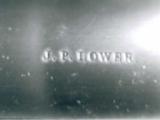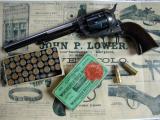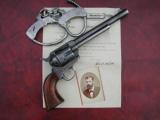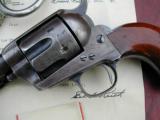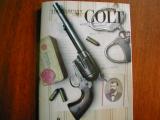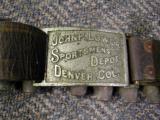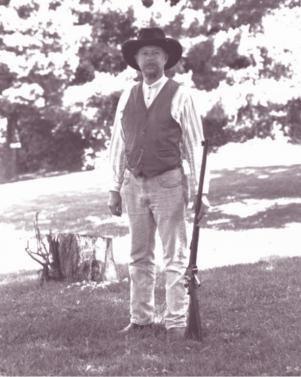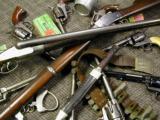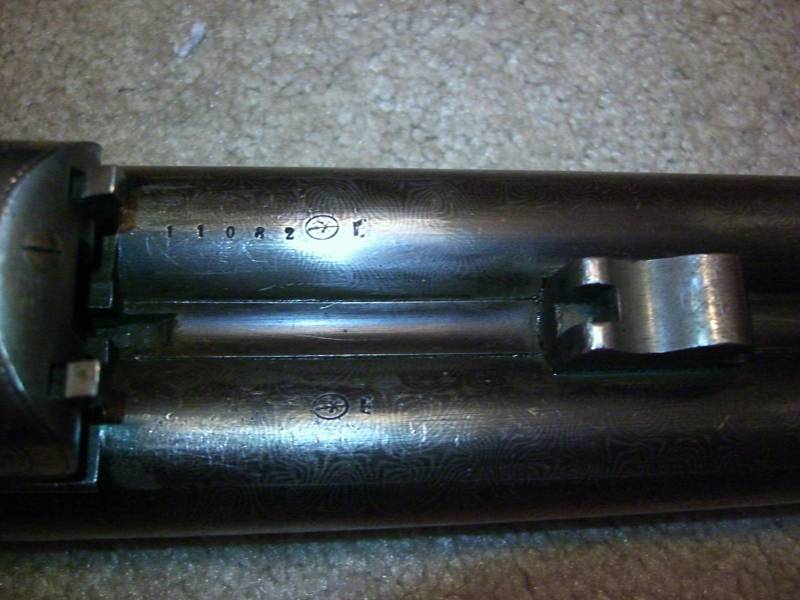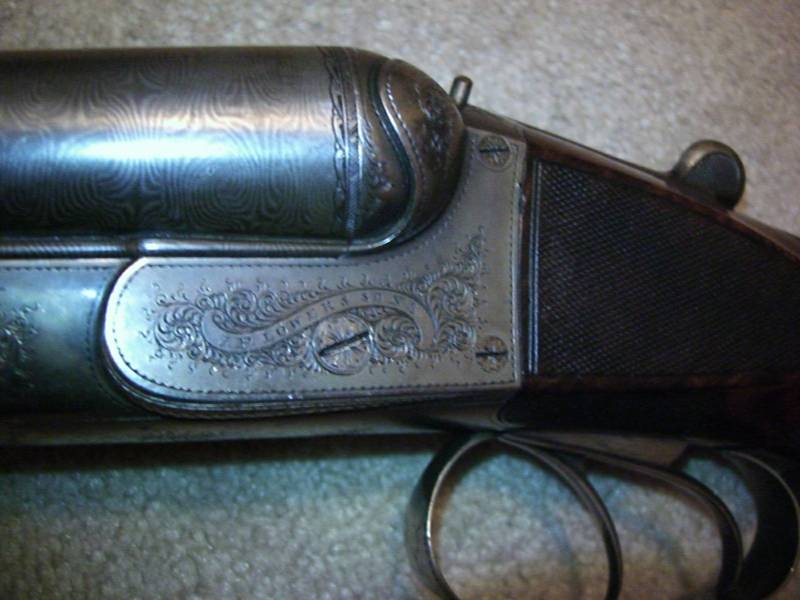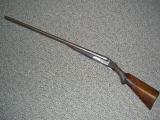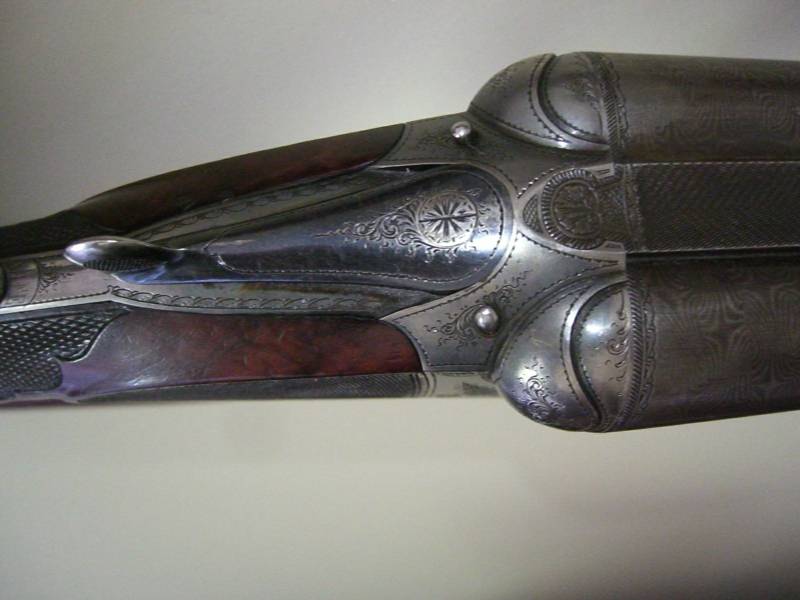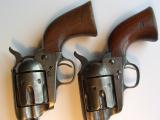

Dave Lanara Restoration
The Lower shotgun.
Copyright 2003 by Dave Lanara, all rights reserved. Reproduction of these pages or their contents is forbidden without consent of the author.
J.P. Lower story
COLTS OWNED BY DECECTIVE EDWARD S. KEITH, FRIEND AND CONFIDANT OF J.P. LOWER
The 2003 summer issue of The Rampant Colt, magazine of the Colt Collectors Association, features a cover photo and five page article on the very single action owned by Denver detective E.S. Keith. I purchased this gun a few years back, and, after researching data associated with it, decided to write this article and photograph the gun. It was originally ordered through J.P. Lower's store in Denver, for the Keith Detective Agency, in 1884. The Western Outlaw and Lawman's Journal for January, 2004, also has an article on Keith. Recently, I obtained the mate to this gun, numbered "1", which is inscribed on the butt exactly as it is on number 2.
Keith was an interesting character to be in law enforcement in the old west. Schooled at Andover academy in the ease, he came west with his parents and a law degree. The family settled in Greely Colorado where his father was a congregational minister. Keith grew up with privilege and was a member of the Denver Drivers club, a horse racing organization for elites. That didn't stop him from seeking a profession in law enforcement. By 1884, he had help found the Rocky Mountain detective agency. He served as sheriff of Arapahoe county and eventually founded the Edward S. Keith detective agency at Cass and Graham streets.
The firm had telephones, over 20 employees and a large arsenal of Colt single actions. Each Colt was numbered on the left grip and butt strap and stamped with "ESK" on both sides of the frame and on the right grip. Numbers ran from 1 to 15, the current known range. These SA's came from one forty gun shipment to J.P. Lower on November 15, 1884. Keith selected the pick of them and numbered them 1 and 2, then hand inscribed his name on the left butt flat of the walnut grip, right through the varnish.
No other Keith marked Colt has these inscriptions.
Spear point Bowie made in Edinbrough, Scotland, marked by Lower.
All these items were once in
Lower's store in Denver. Wish they all could talk!
CLICK THIS LINK TO SEE INCREDIBLE VIEWS OF THE STORE INTERIOR!
CLICK HERE TO SEE THE AWARD WINNING O.G.C.A. DISPLAY!
This story is protected by a copy write in the the U.S. Copywrite office.
ANY USE OF THE FOLLOWING STORY IS PROHIBITED WITHOUT THE EXPRESS CONSENT OF THE AUTHOR. NO COMMERCIAL USAGE WILL BE PERMITTED NO GUN ADS, NO RELATED ADS.
Rare Colt model 77 with his stamping.
Belt buckle design by Lanara Enterprises copyright 2006
Bowie knife marked J.P. LOWER SPECIAL
Photos copyright Dave Lanara Enterprises 2010
J.P. and Fanny, 1859
There are many individuals of famous and infamous reputation in our great western history. These well known figures, with names like Doc Holiday, Buffalo Bill and Wyatt Earp, built our image of the west. In reality, lesser known characters played a much more important role, even though they sometimes knew and served the more famous. One of them was John Pray Lower.
Born in Philadelphia January 23, 1833, Lower started in the gun trade at age 13, when he was apprenticed to a Philadelphia blacksmith turned gunsmith and dealer, Joseph Grubb. In five years, Lower became a master gunsmith with all of the know guns of the era. From 1851 through 1858, John busied himself with his shop duties and his own entrepreneurial pursuits, buying up surplus gun part to build fowling pieces, halfstock rifles and shotguns. He engaged several area gun makers for locks, stocks and other parts he could not obtain in the surplus channels. In addition, due to the pre Civil War demand for weapons, he invested time and money with various makers willing to breech patents of well known manufactures.
Deringer single shot pistols were among these, as well as a clandestine partnership with William P. Unlinger, who designed and improved a six shot revolver initiated by William Hankins. Uhlinger had purchased the machinery from Hankins and proceeded to manufacture 22 and 32 rimfire revolvers of solid frame construction. This was an infringement of the Rollin White patent for bored through cylinders using metallic cartridges. Before any legal action was taken by Smith and Wesson, who owned the patent, Uhlinger made an agreement with Lower to manufacture the pistols using Lower's name and that of two other investors stamped on the guns. As the war drums heated up, Lower took control of most of the inventory. When Grubb sent Lower on the road "drumming" in 1858, the derringers and eventually the Uhlinger revolvers were distributed throughout the states Lower visited. Many of the Unlinger revolvers were sold south of the Mason Dixon line.
Ever expanding his travels, he was active before the war as an arms consultant. His contacts with surplus houses, including those offering obsolete government arms and ammunition, built a solid reputation which he would draw upon in the future. A political neutral, there is evidence that he engaged in gun running after the start of hostilities. He stated in a memoir that many trips were made in 1861, 62 and 63, where furnishing arms to northerners or southern sympathizers was considered business and nothing else. After capitalizing on the aftermath of Gettysburg's bloody sacrifice, he realized the cause of the North was just, and then enlisted, where he served in an artillery unit at Fort Barry, just outside of Washington. He mustered out in April of 1865.
With the west expanding, he once again took up his position with Grubb and began a routine of travel that took him ever farther into the frontier. Typically, the train was taken to the end of the line, then by coach to outlying regions. "Pretty rough traveling in those days" he states. Edging ever closer to the Rocky mountains, the train took him in1868 to Larimer, Wyoming. On one of these trips, he met Carlos Gove, acclaimed gunsmith and crack shot, who operated a shop in Denver. The men hit it off, with Gove inviting Lower to become a partner. John finally convinced his family to move west with him in 1872, which began a three year partnership with Gove.
When an opportunity to buy out the Fruend Brothers presented itself in the spring of 1875, Lower jumped at it. He felt there was enough trade to go around for all and bought everything the Fruend's had, including all the cabinetry, game heads and advertising material. He also got a 20 foot long shotgun sign, which had hung outside of Fruends shop. Their shop was a stones throw from the store Lower selected on Blake street. That store also had living quarters behind it, which allowed Lower to stay late and sleep as needed. Throughout his time in Denver, he moved 5 times, always looking for a better, if not safer location.
Lower had many friends, from the famous to the obscure. William Cody was a very good friend, so good that Lower presented him with a factory engraved Colt Single Action, engraved with Cody's name on the back strap, in 1889. He knew all the early trappers, Jim Bridger and Kit Carson among them. Most of the hide hunters bought their outfits from him, and as a result, he became very rich selling the hides brought to him for sale or trade. The Grande Duke Alexis from Austria bought his party's outfits from Lower when Custer invited the Duke on a buffalo and game hunt. All of the famous lawmen and outlaws frequented his shop when in Denver. The Ute Indians made his store their headquarters, trading many fine historical articles to him over the years. Although the Ute's had a deadly reputation in the following years, none of them ever stole so much as a cartridge from him. He trusted them so much that he'd lock them in on cold winter nights, sleeping on buffalo robes around his stove.
His wealth increased gradually, and by 1886 he was worth $100,000, having a major share in a stone quarry up in Fort Collins. At the end of that year, he was near bankruptcy, his partner and secretary/foreman stealing all the funds while Lower was with his dying wife in Philadelphia. He never recovered financially from this loss, but managed to continue in the gun trade. Times were hard, and a newspaper interview in 1914 revealed that he had been trying to sell his historical artifacts to he State of Colorado with no success. He needed a thousand dollars to continue his business and was given the money by a good friend of 40 years before, which restored his faith in his fellow man. But depression soon followed after the loss of his two sons and a daughter. His crippled son Clarence helped him in the shop, bookkeeping and setting up pawns.
In 1916, Lower and his son began writing a historical bio, which was mainly written by Clarence as Lower dictated his memories. They never finished the bio, as Lower died August 22, 1917, from heart failure. Clarence sold the property and artifacts to the highest bidder and set up his own pawn brokerage. He died in 1937. Photographic plates in his possession and other gun related items that had not been auctioned ended up in the hands of Joe Kadish, Colorado Springs. Joe ran a gun and sporting goods shop up into the 1950s, when he passed on. The new tenants eventually found the old photographic plates in the early 60s and turned them over to the Colorado Historical Society. His bio was found by a great, great niece, and related to us over time.
Famous Lincoln Peace medal purchased by Lower in 1873 from Ute chief Honko, who was struck in the chest by the bullet still embedded in the upper right of the medal. The chief survived the strike but sold it to Lower, saying it was Heap bad Medicine. This was one of the artifacts sold by Clarence after Lower's death. It now resides in the ANS collection in New York City, a priceless relic of Colorado history.

